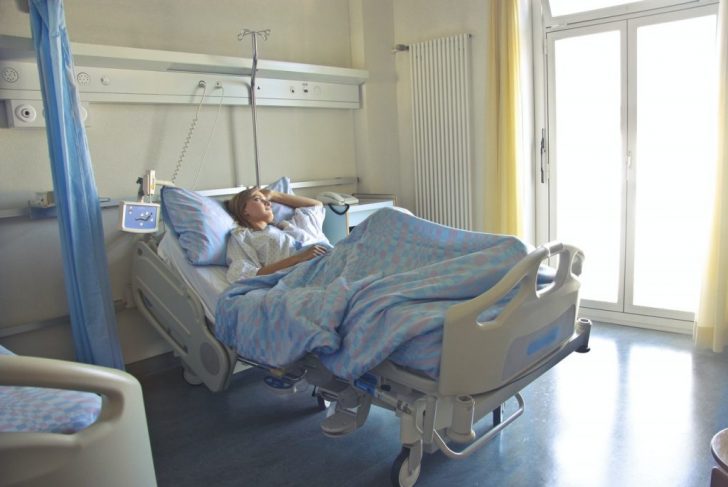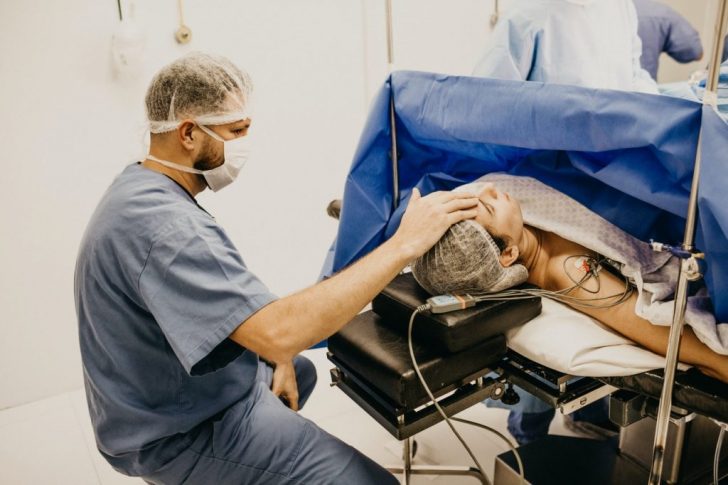
Here’s Everything You Need To Know About Parkinson’s Disease

Parkinson’s disease is very common overall, ranking second among age-related degenerative brain diseases. It’s also the most common motor (movement-related) brain disease. Experts estimate that it affects at least 1% of people over the age of 60 worldwide.
Parkinson’s disease is a progressive disorder that affects the nervous system and the parts of the body controlled by the nerves. Symptoms start slowly. The first symptom may be a barely noticeable tremor in just one hand. Tremors are common, but the disorder may also cause stiffness or slowing of movement.

Andrea Piacquadio/ Pexels | Live in the moment, enjoy the day make the, most of what you have
In the early stages of Parkinson’s disease, your face may show little or no expression. Your arms may not swing when you walk. Your speech may become soft or slurred. Parkinson’s disease symptoms worsen as your condition progresses over time.
What causes Parkinson’s disease?
The cause of Parkinson’s essentially remains unknown. However, theories involving oxidative damage, environmental toxins, genetic factors, and accelerated aging have been discussed as potential causes of the disease. In 2005, researchers discovered a single mutation in a Parkinson’s disease gene, first identified in 1997, which is believed responsible for five percent of inherited cases.
The most prominent signs and symptoms of Parkinson’s disease occur when nerve cells in the basal ganglia, an area of the brain that controls movement, become impaired and/or die. Normally, these nerve cells, or neurons, produce an important brain chemical known as dopamine. When the neurons die or become impaired, they produce less dopamine, which causes the movement problems associated with the disease. Scientists still do not know what causes the neurons to die.

Jonathan Borba/ Pexels | People with Parkinson’s can have a good quality of life
Prevention
Because the cause of Parkinson’s is unknown, there are no proven ways to prevent the disease. Some research has shown that regular aerobic exercise might reduce the risk of Parkinson’s disease.
Some other research has shown that people who consume caffeine, which is found in coffee, tea, and cola, get Parkinson’s disease less often than those who don’t drink it. Green tea is also linked to a reduced risk of Parkinson’s disease. However, it is still unknown whether caffeine protects against Parkinson’s or is related in some other way. Currently, there is not enough evidence to suggest that drinking caffeinated beverages protects against Parkinson’s.
Medications

Alex Green/ Pexels | Two keys to the treatment of symptoms is to focus on speech and movement
Most Parkinson’s patients are treated with medications to relieve the symptoms of the disease. These medications work by stimulating the remaining cells in the substantia nigra to produce more dopamine or inhibiting some of the acetylcholine that is produced, restoring the balance between the chemicals in the brain. Working closely with the doctor to devise an individualized treatment plan is very important since side effects vary greatly by class of medication and patient.
Your health care provider may order lab tests, such as blood tests, to rule out other conditions that may be causing your symptoms. Imaging tests, such as an MRI, ultrasound of the brain, and PET scans, may also be used to help rule out other disorders.
More in Treatment
-
`
5 Reasons Why Dad’s Side of the Family Misses Out
Family bonds are intricate and multifaceted, often creating a unique tapestry of connections. However, many people notice a peculiar trend: stronger...
July 12, 2024 -
`
A Quick Guide on How to Get Short-Term Disability Approved for Anxiety and Depression
Living with anxiety or depression poses unique challenges, particularly in the workplace, where stress can exacerbate symptoms. For many, short-term disability...
July 5, 2024 -
`
Why Do People Feel Sleepy After Eating?
Is feeling sleepy after eating a sign of diabetes? Well, not directly. There are many reasons why you feel drowsy after...
June 20, 2024 -
`
What Is High-Functioning Depression? Symptoms and Treatment
High-functioning depression may not be a term you hear every day, but it’s a very real and challenging experience for many....
June 13, 2024 -
`
Kelly Clarkson’s Weight Loss Ozempic Journey – Debunking the Rumors
In a refreshing moment of transparency, Kelly Clarkson, the beloved singer and talk show host, sheds light on her remarkable weight...
June 3, 2024 -
`
What Is the Best Milk for Gut Health and Why?
In recent years, the milk section at the grocery store has expanded far beyond the traditional options. While cow’s milk has...
May 30, 2024 -
`
Do Dental Implants Hurt? Here’s All You Need to Know
When you hear “dental implants,” you might wince at the thought of pain. But do dental implants hurt as much as...
May 24, 2024 -
`
5 Key Differences Between A Psych Ward & A Mental Hospital
Curious about the differences between a psych ward and a mental hospital? You are not alone. With the mental health conversation...
May 16, 2024 -
`
It’s Official! “Selling Sunset’s” Christine Quinn & Husband Christian Dumontet Are Parting Ways
Have you ever found yourself unexpectedly engrossed in the personal lives of celebrities, especially when their stories take dramatic turns? Well,...
May 9, 2024










You must be logged in to post a comment Login